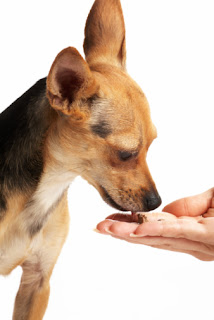Congratulations, the cat's out of the bag! You've just entered into a wonderful relationship that's bound to be filled with fun and affection. By starting off on the right foot—that is, by being well-prepared for your new arrival—you can move through that rocky adjustment period most new relationships go through and get right down to the lovin'!
1. Make Sure Everyone In The House Is Prepared To Have A Cat
Talk to your family members before bringing a new cat home. Make sure everyone knows that the fun begins only after kitty feels safe and her needs are met. Once you're sure everyone is ready for feeding, litter changing and grooming, you can divvy up chores among family members so everyone is prepared to care for kitty before she arrives.
2. Do You Know What Your Cat Is Trying To Tell You?
The average cat has a vocabulary of more than 16 different sounds, including purring, howling, hissing and meowing—not to mention a wide-range of playful and serious body language. Taking a glance at our
Cat Care section will help you understand your cat's behavior before you're faced with her mysterious cat calls, pouncing and nocturnal romps.
3. Stock Up On Supplies Before Kitty Arrives
Have all of your cat's needs ready so she can get right down to the business of making herself at home. Kitty will need:
- A litter box and the brand of litter she's been using
- Food and water bowls and the food she's used to eating
- A sturdy, rough-textured scratching post—at least three feet high—that allows her to stretch completely while scratching
- Safe, stimulating toys. Hint: If you give her toys that make noises, you'll know when she's playing.
- A bed lined with a soft, warm blanket or towel
- Grooming tools: a high-quality brush and nail clipper are a good start
4. Identity Is Key
Proper identification is a necessity. If your kitty is indoors-only, an ID tag or implanted microchip will help ensure she'll be returned to you if she gets out and can't find her way home. A safety collar with an elastic panel will allow your cat to break loose if the collar gets caught on something. We caution against letting cats outdoors, but if you do—or if a window or door is left open—a safety collar and an ID tag may be what bring your missing cat home.
5. A Room Of One's Own
Choose a low-traffic room your kids and other pets don't frequent—this will be your cat's safe space to sniff, eat, scratch and play while she gets her bearings. Arrange her food and water bowls, bed and litter box—and scatter her toys around. You can even clean off a windowsill for her and have soft music playing. She'll appreciate the chance to feel out her new family from inside her haven.
6. Routine Behavior
Give your cat a little structure to lean on. For the first few weeks, provide him with the same kind of food and feeding schedule he had before living with you—and give him the same brand of litter, too, for a familiar scent and feel on his paws. Later on, if you wish to switch to different products, you can make a slow transition.
7. What's New, Pussycat?
With a whole new life in store for her, Kitty will need some time and space to check out her surroundings and all of her new play things. Give her time alone in her room to get comfortable before you come in to play with her. If you have other pets, it's a good idea to leave your new cat in her own room for a few days will allow the other animals in the house to get used to her sounds and scent. (Hint: Watch from the door to see how she leaves her carrier. Whether she pussyfoots into a dark corner or zooms out into the room, you'll know how she feels about her new surroundings.)
8. Introducing Kitty To The Pack
Go slow at first. A cat may need seven to fourteen days to relax into her new environment. If you have kids, let them introduce themselves one at a time. Hold up on the meet-and-greets with friends, neighbors and relatives until your kitty is eating and eliminating on a normal schedule. If you have other pets, don't let your new addition have free run of the house. This is the territory of the animals who have lived with you already. Allow all of your pets to meet in the new cat's territory—and make sure you're there to supervise.
9. Cat-Proof Your Home
When your cat is ready to explore the rest of her new home (for short excursions at first), be sure to get rid of stray items she might chew on or swallow, like toilet paper, tissues and paper towels. Pens and pencils may need to be kept in drawers. You may also have to tape wires to baseboards and put caps on outlets.
Put away harsh
cleaning products, human medications and household poisons, and rehome any
houseplants that might be toxic to her. Make sure
foods that aren't healthy for a cat's tummy are placed securely out of reach.
10. Visit The Vet Within Her First Week
Last but not least, bring your new feline to a caring veterinarian for a wellness exam within one week after adoption. Make this appointment even before you bring your kitty home.


.jpg)
.jpg)
.jpg)
.jpg)















